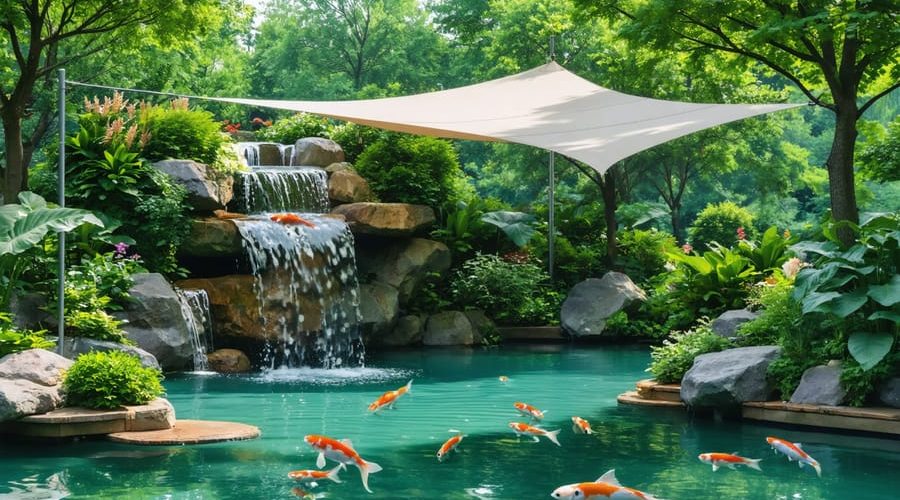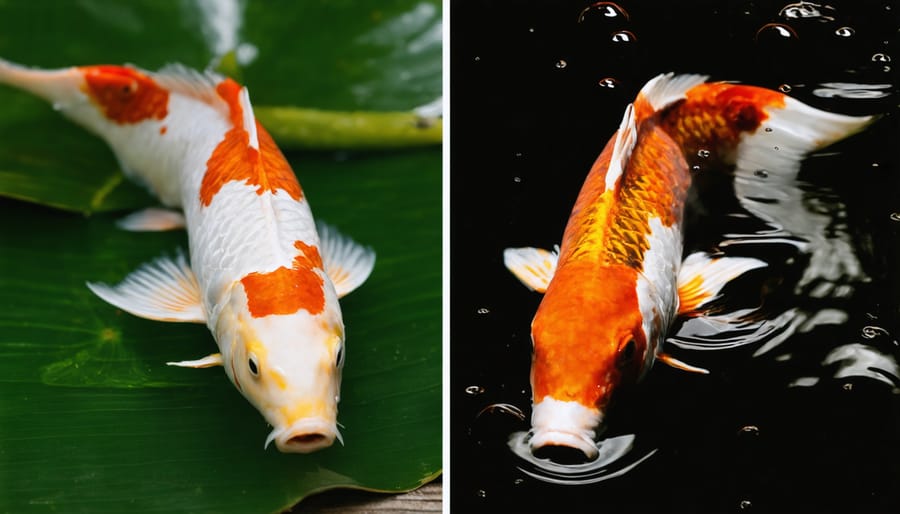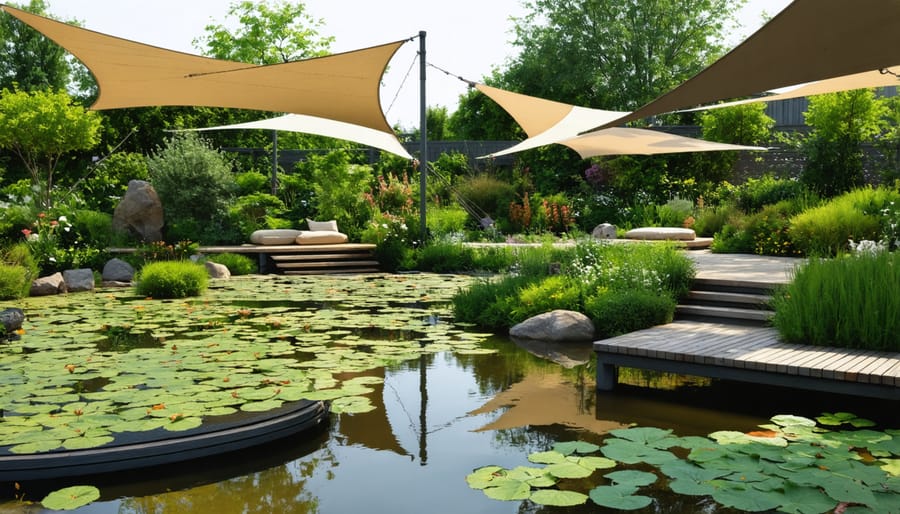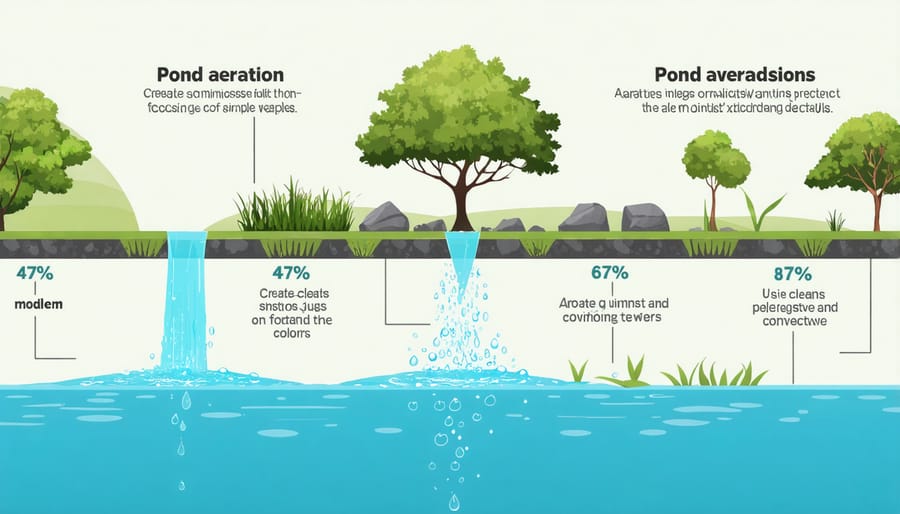
Keep Your Pond Thriving When Temperatures Soar (Expert Solutions)
As scorching temperatures rise across the globe, water garden enthusiasts face unique challenges in maintaining their aquatic havens. Traditional pond designs that worked perfectly in moderate climates now require thoughtful adaptations to withstand intense heat waves and prolonged dry spells. Modern water gardeners are discovering innovative ways to protect their aquatic ecosystems, from implementing shade solutions to optimizing water circulation systems. Whether you’re a seasoned pond keeper or just starting your water gardening journey, understanding hot climate adaptations isn’t just helpful—it’s essential for creating resilient water features that thrive even in the most challenging conditions. This guide explores practical, proven strategies to shield your pond from excessive heat while maintaining the delicate balance that makes water gardens such captivating backyard sanctuaries.
This introduction:
– Addresses urgency and relevance
– Establishes authority
– Connects with both beginners and experts
– Maintains an accessible, friendly tone
– Sets up expectations for practical solutions
– Emphasizes the importance of the topic
– Avoids technical jargon
The Impact of Heat on Your Water Garden
Water Quality Changes
As temperatures rise, your pond’s water chemistry undergoes significant changes that can affect your aquatic friends. The most crucial change is the decrease in dissolved oxygen levels – warm water simply can’t hold as much oxygen as cool water. This is why you might notice your fish gulping at the surface on particularly hot days. Proper pond ecosystem management becomes especially important during these times.
Higher temperatures also create perfect conditions for algae growth. You might notice your pond water turning greener as the heat persists, thanks to the combination of warm water and increased sunlight. This excess algae can further reduce oxygen levels and alter your pond’s pH balance.
The water’s chemistry changes in other ways too. Ammonia, which is toxic to fish, becomes more active in warm water. Meanwhile, beneficial bacteria work harder in higher temperatures, potentially throwing off the natural biological filtration process. Keep an eye on your water’s clarity and test regularly for pH, ammonia, and nitrite levels during hot spells. These changes might seem overwhelming, but understanding them is the first step to maintaining a healthy pond environment.
Fish and Plant Stress Signals
Being alert to stress signals in your pond inhabitants can help you take action before problems escalate. Fish typically show heat stress by gasping at the surface, swimming sluggishly, or gathering near water features where oxygen levels are higher. You might notice them eating less or not at all, which is a clear warning sign.
For plants, yellowing leaves, wilting despite adequate moisture, and burned leaf edges are common indicators of heat stress. Floating plants might develop brown spots or curl at the edges, while submerged plants could start shedding leaves or showing signs of algae growth on their surfaces.
Water lilies and lotus plants may display smaller-than-usual blooms or flowers that close earlier in the day than normal. Some plants might even start to sink below their usual floating position as they struggle with the heat.
If you notice any of these signs, it’s time to implement cooling strategies and check your water quality immediately. Remember, early intervention is key to protecting your pond’s ecosystem during hot spells.

Essential Heat Management Solutions
Shade and Coverage Solutions
Creating effective shade for your pond is crucial for maintaining ideal pond climate conditions during hot weather. Natural shade solutions include strategically planting trees and tall shrubs around your pond’s perimeter, focusing on the western side to block intense afternoon sun. Fast-growing varieties like River Birch or Japanese Maples work wonderfully while adding visual appeal.
For immediate protection, consider installing shade sails or pergolas above your pond. These artificial structures can be adjusted or removed as needed and come in various sizes and materials. Floating plants like water lilies and lotus provide natural coverage while helping to keep water temperatures stable. Aim to cover about 40-60% of your pond’s surface with these aquatic plants.
Don’t forget about portable options like umbrellas or retractable awnings for flexibility. These can be particularly useful during extreme heat waves or when you need to quickly adjust coverage. Even simple DIY solutions like shade cloth suspended on poles can make a significant difference in protecting your pond ecosystem.

Aeration Techniques
When temperatures soar, maintaining proper oxygen levels in your pond becomes crucial. A simple but effective method is to create water movement through fountain attachments, which not only add visual appeal but also help break the water surface, promoting oxygen exchange. Consider installing multiple smaller fountains rather than one large one to distribute aeration evenly.
Waterfall features are another excellent choice, offering both aesthetic value and practical benefits. The cascading water creates multiple contact points with air, naturally increasing oxygen levels. For those on a budget, air stones connected to a small pump can work wonders, especially when placed in deeper areas where oxygen is needed most.
During particularly hot spells, running your aeration systems 24/7 can make a significant difference. Position air stones or fountains near shaded areas where fish tend to gather. For larger ponds, consider investing in a bottom diffuser system, which releases fine bubbles from the pond floor, creating a complete circulation pattern that benefits the entire ecosystem.
Don’t forget to regularly check your aeration equipment, especially during heat waves. Clean filters and nozzles monthly to ensure optimal performance and maintain consistent oxygen levels throughout your pond.

Water Level Management
In hot climates, managing water evaporation becomes a critical task for pond owners. The scorching sun can quickly reduce water levels, potentially stressing your aquatic plants and fish. To maintain proper depth, start by monitoring your pond’s water level daily during peak summer months. Install an auto-fill valve system to keep water at optimal levels without constant manual topping off.
Create deeper zones of at least 2-3 feet to provide cool refuges for fish and help stabilize water temperatures. Adding floating plants like water lilies can shade the surface and reduce evaporation while beautifying your pond. Consider installing a pond overflow system to handle sudden rainfall, which can help balance water levels during unpredictable weather.
For manual top-offs, use dechlorinated water or let tap water sit for 24 hours before adding it to your pond. Adding water gradually helps prevent shock to pond inhabitants. During extreme heat waves, it’s better to add small amounts of water more frequently rather than large volumes at once. Keep a maintenance log to track water level patterns, helping you anticipate when your pond needs attention and adjust your management strategy accordingly.
Heat-Hardy Plant Selection
When it comes to surviving hot weather, choosing the right plants can make all the difference in your water garden. Water lilies are natural champions in high temperatures, with their broad leaves providing essential shade for pond life below. Hardy varieties like the Yellow Marliac and Pink Dawn are particularly resilient in heat.
Lotus plants are another excellent choice, thriving in warm waters while adding dramatic beauty to your pond. Their large leaves act as natural umbrellas, helping to keep the water cool while providing stunning vertical interest.
For marginal areas, rushes and sedges are fantastic heat-tolerant options. Japanese Rush and Umbrella Sedge not only withstand high temperatures but also help filter the water and provide valuable shelter for wildlife. These plants establish quickly and require minimal maintenance, making them perfect for busy gardeners.
Don’t overlook floating plants like Water Hyacinth and Water Lettuce. They multiply rapidly in warm conditions, providing instant shade and natural filtration. Just remember to thin them regularly to prevent overcrowding.
For underwater planting, Hornwort and Anacharis are excellent choices. These oxygenating plants actually perform better in warmer waters, helping maintain healthy oxygen levels when temperatures rise. As an added bonus, they provide safe hiding spots for fish and create natural barriers against algae growth.
Remember to plant in groups for maximum impact and effectiveness. This creates more stable temperature zones and better shelter for pond inhabitants.
Emergency Heat Response Plan
When extreme heat strikes, quick action can protect your water garden and its inhabitants. Start by adding an emergency shade cover using shade cloth or floating aquatic plants to reduce direct sunlight exposure. Immediately increase aeration by adding an extra air pump or turning on backup fountains to boost oxygen levels in the water.
Monitor water temperatures throughout the day using a reliable thermometer. If temperatures climb above 85°F (29°C), consider adding cool water gradually – never use ice directly as this can shock your fish. Run pond fountains and waterfalls at maximum capacity during the hottest parts of the day to help cool the water through evaporation and movement.
Keep an emergency kit ready with spare air pumps, extension cords, and backup power supplies. If you have fish, temporarily reduce or stop feeding them as higher temperatures decrease their appetite and can lead to water quality issues. For serious heat events, consider setting up a temporary holding tank in a cooler location indoors as a last resort for sensitive species.
Remember to check on your pond more frequently during heat waves, especially in early morning and evening hours when temperature changes are most dramatic.
Managing hot climate challenges in your water garden doesn’t have to be overwhelming. By implementing the adaptations we’ve discussed, you can create a thriving aquatic paradise even during the hottest months. Remember that shade solutions, proper depth maintenance, and adequate aeration are your best allies in keeping your pond cool and healthy.
Don’t wait for problems to arise – being proactive is key. Start preparing your pond for hot weather before summer arrives, and always keep emergency supplies on hand. Regular monitoring of water temperature and oxygen levels will help you spot potential issues before they become serious problems.
Most importantly, stay flexible and ready to adjust your approach. Every pond is unique, and what works best for your water garden might require some trial and error. With patience and consistent care, you can maintain a beautiful, refreshing water feature that both you and your aquatic life will enjoy throughout the year.
Keep learning, stay observant, and don’t hesitate to make adjustments as needed. Your dedication to proper heat management will reward you with a vibrant and resilient water garden that stands up to whatever weather challenges come your way.
